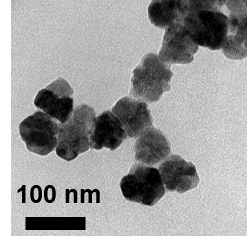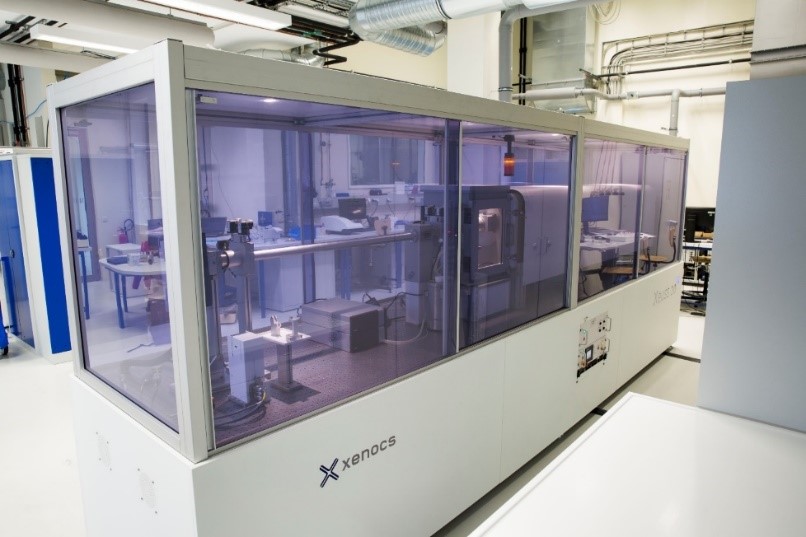Synthesis of highly functional nanoparticles via a sol-gel process using X-ray scattering methods: from process development to process control
- Contact:
Guohui Yang M.Sc.
- Funding:
DFG
The development of alternative fabrication processes for functional
nano-materials in semiconductor systems, e.g. thin-film solar cells, has a high scientific value in the context of energy transition. A wide range of alternative semiconductor materials made of highly crystalline metal oxides (MeO) offer comparable properties as the frequently used expensive semiconductors. For example, the aluminium-doped zinc oxide (AZO) in Fig. 1, presents analogous optoelectronic and mechanical properties as indium-based semiconductors.

Fig. 1. Hexagonal-shaped AZO-nanocrystals formed via the benzylamine route
The non-aqueous sol-gel synthesis route (NAR) offers a controllable process route for the production of a broad variety of highly functional MeO. In nonaqueous sol-gel chemistry the transformation of precursors, e.g. metal-organic precursors, takes place in an organic solvent under exclusion of water. The NAR is able to produce MeO materials with adjustable particle properties (sizes, morphologies) for specific modifications of the product properties by only minor adjustments of the synthesis parameters.
In addition, the NAR generates highly crystalline materials at relatively low temperatures and process speeds. This enables the application of measurement technologies for time-resolved process characterization and thus provides excellent preconditions for their real time integration into an autonomous process control system.
The NAR follows similar and understood reaction schemes on the chemical level for all MeO. However, a generalized description on the particulate level poses a significant challenge. The cooperation between the Department of Electrical and Information Engineering (ET&IT) of Kiel University and the Institute of Mechanical Process Engineering and Mechanics (MVM) of KIT aims at the development of a novel autonomous process control scheme for the fabrication process of highly crystalline MeO via the NAR as well as an investigation of its extension to particle property and product property control for general particle processes following the NAR.
The main focus of the MVM is the parameterization of NAR-based MeO synthesis as well as reactor design for integrating an in-situ absorbance sensor. In a further step, the results will be transferred to the characterization of stabilization and coating process on a nanoscale (1-100 nm). X-ray scattering (SAXS/WAXS/GISAXS) as the central measurement method in this project, is non-destructive and allows the simultaneous determination of a variety of particle properties such as concentration, sizes, fractal properties as well as the quantification of crystalline phases. The lab-scale SAXS camera (Xenocs Xeuss 2.0 in Fig. 2) is available at MVM.

Fig. 2. The lab-scale camera Xenocs Xeuss 2.0 for resolving particle properties on nanoscale
This research project is part of the DFG Priority Programme “Autonomous processes in particle technology” (SPP2364) with the goal to develop and implement control concepts for single-stage and, in a further step, multi-stage particle processes (process chain).
